In part three of this four-part series, Crē•8 Music Academy Director of Education Doug Fenske compares and contrasts common production tasks in Logic Pro and Pro Tools.
Logic Pro
Logic Pro is mostly used in writing, pre-production and composition studios. These spaces are typically smaller in size, don’t have a recording console and may be located in a residence or a facility that houses several small studios that are paid monthly (lockout). As previously mentioned, Logic excels in all tasks related to composition. MIDI information is presented in a clean, flexible fashion in the piano roll.
Notice how the MIDI events can be easily quantized according to a specified note division by pressing Command + A to “select all” and then the letter Q to quantize:
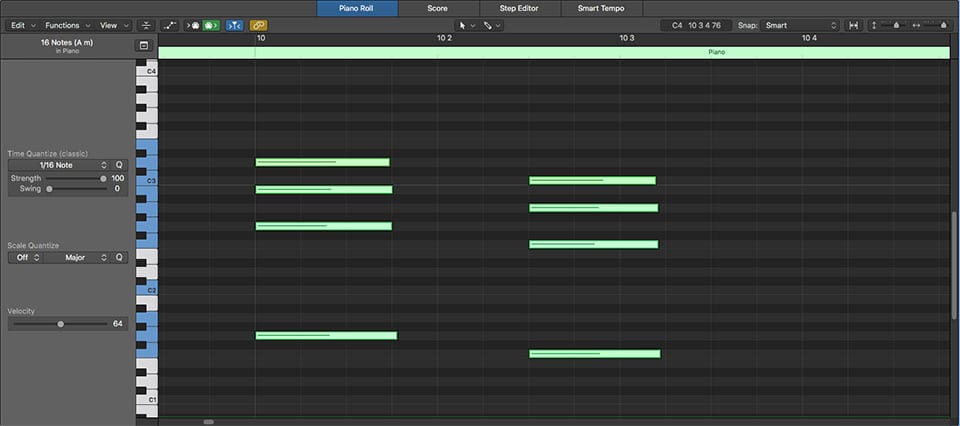
Adjusting the length of multiple notes at once is fast and efficient. It can be done so the notes keep their relative lengths or so they all snap to the same length. Hold shift while dragging a note to make all selected notes snap to the same length:
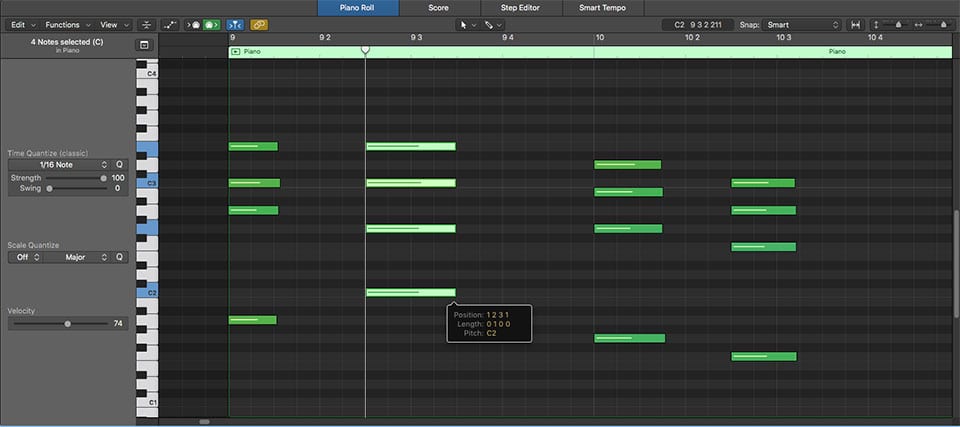
Adjusting note velocity is easy and flexible as well. There are three options when using the velocity slider in the lower left corner of the piano roll:
- Adjust the velocity of an individual note

- Adjust the velocity of multiple notes while retaining their relative velocities

- Adjust the velocity of multiple notes while forcing them all to the same velocity by holding the Option key while you adjust the velocity slider
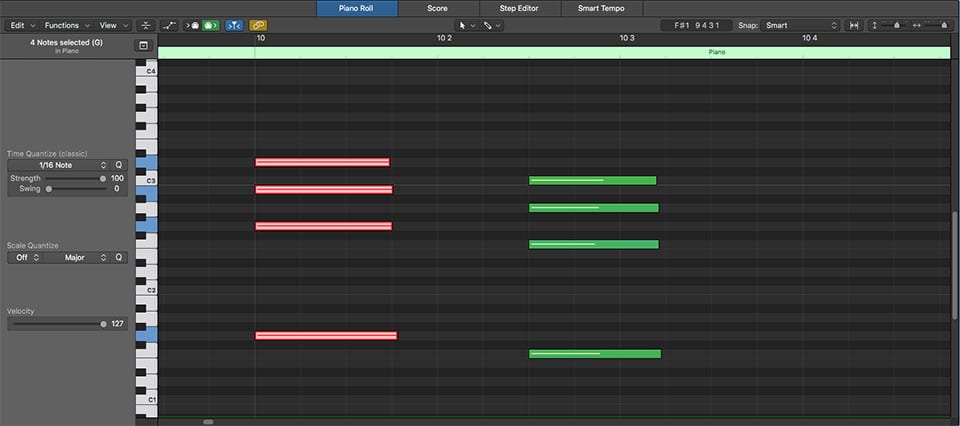 Changing the pitch of a note to audition different chord voicing or drum sounds is very easy to do, and is particularly powerful to do while playback is rolling. Hold option and use the arrows on the keyboard.
Changing the pitch of a note to audition different chord voicing or drum sounds is very easy to do, and is particularly powerful to do while playback is rolling. Hold option and use the arrows on the keyboard.

In order to fully understand our tools, we also need to know where they lack. Logic does not handle audio-related processes as well as Pro Tools. Examine a vocal comping task in Logic (using take folders) versus Pro Tools (using playlists). In Pro Tools, it’s much faster to isolate the area of the vocal to be used and move it seamlessly to the comp track or playlist. Logic attempts to keep up with a method called “Quick Swipe Comping”, which actually creates a scenario where the computer is finishing the vocal edits and crossfades for us. Scary. We want full control over our song, especially the lead vocal, and never allow the computer to tell us what to do. It takes a few extra steps in order to get the vocal takes to the same complete flexibility that can be achieved with Pro Tools immediately.
Logic Pro should be incorporated into the workflow at two points: before the vocal has been recorded (while developing the basic instrumentation and drums for the demo) and after the vocal has been recorded (to add or reinforce melodic and rhythmic themes that occurred during the vocal sessions). Using our composition tool in this way allows us to keep a high level of flexibility and power each and every time we need to add a new drum or piece of instrumentation. In other words, it keeps the composition tasks contained to Logic and allows us to hit the nail with a hammer instead of a screw driver.
Pro Tools
Pro Tools is found in all high-end, professional recording facilities. This is because all DAW roads eventually lead to Pro Tools in the professional environment. However, many project studios and residential spaces rely on Pro Tools for their precision tasks that are audio-related. Pro Tools’ design, multitude of potential workflows, high-level flexibility and precision with regard to the tasks in which it excels is unparalleled. Let’s examine a few examples of the almost effortless processes common in Pro Tools.
Listening to each take of a vocal performance, via playlists, is a one-button click:
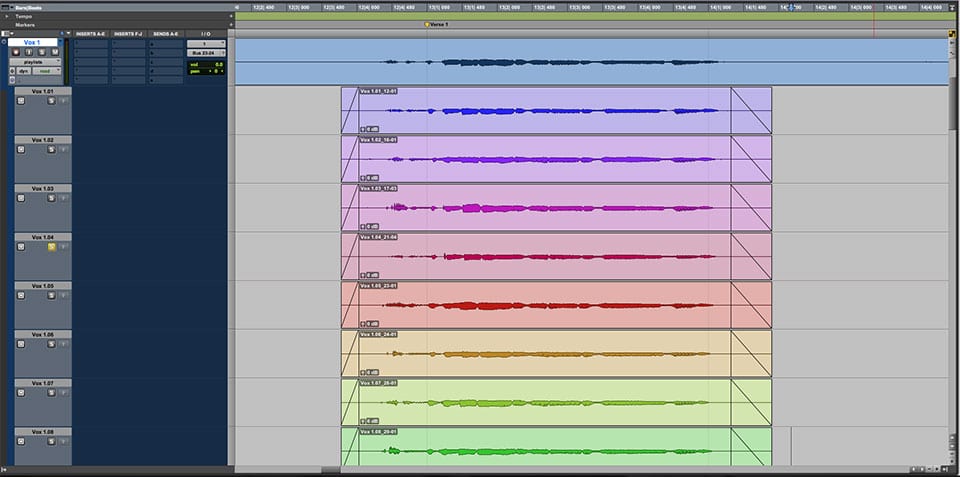
After the best take has been selected, locking it in to a comp playlist is also a one-button click: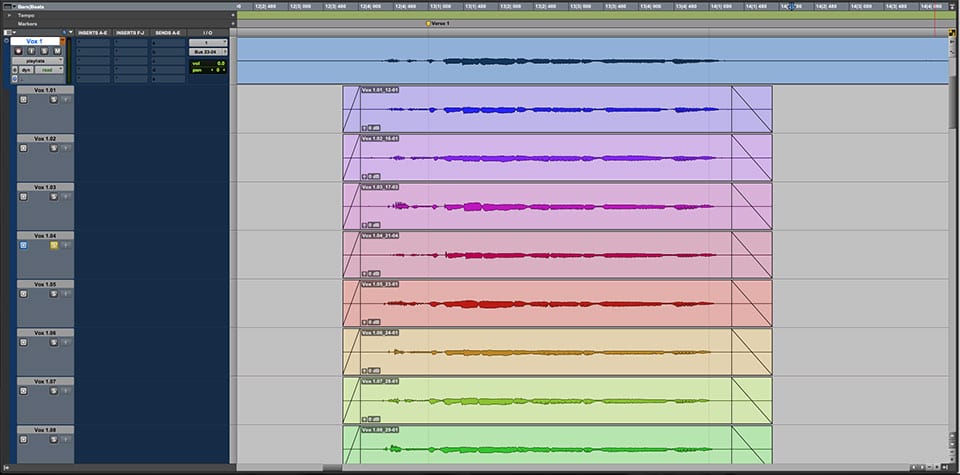
Additionally, if a “comp track” workflow is preferred (which I endorse), holding control and option while dragging the clip to the comp track will guarantee that the vocal maintains the exact timing with which it was performed, while simultaneously creating a copy of the clip (rather than destroying the take):

Working with the grid is powerful and easy. In this example, there are three ways to “fly” instrumentation or vocals while guaranteeing the exact timing of the original performance is maintained without having to switch modes or tools. The first example is selecting the appropriate areas of the grid and Command + D to duplicate: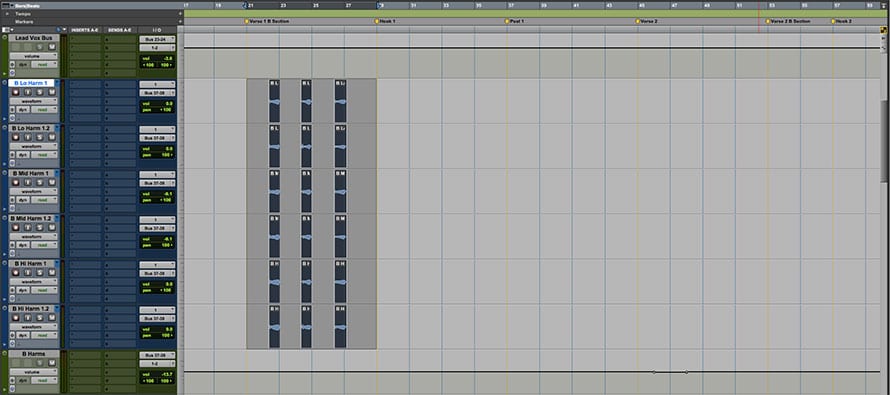
Second, this process can be done by selecting the grid, holding option and dragging the performance to the desired area of the song: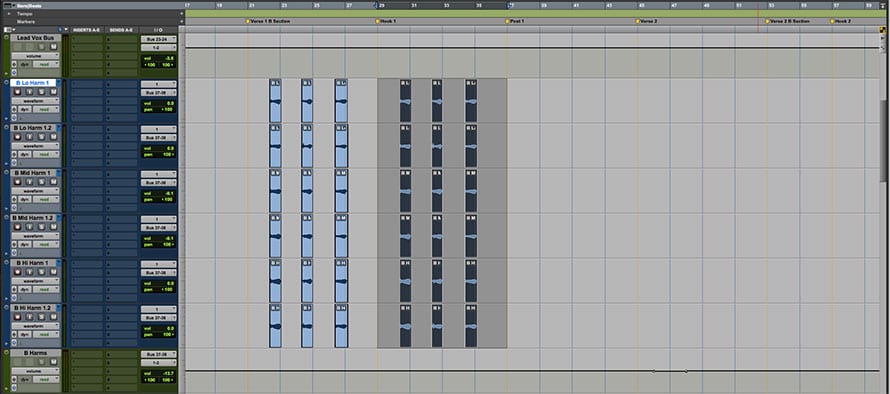

Finally, a clip group can be created and flown to the other desired area(s) of the song by making the selection on the grid, using the keystroke Shift + Option + G, then holding option and dragging it to wherever it needs to land: 
These clip groups can stay as they are, or can be ungrouped with the keystroke Shift + Option + U: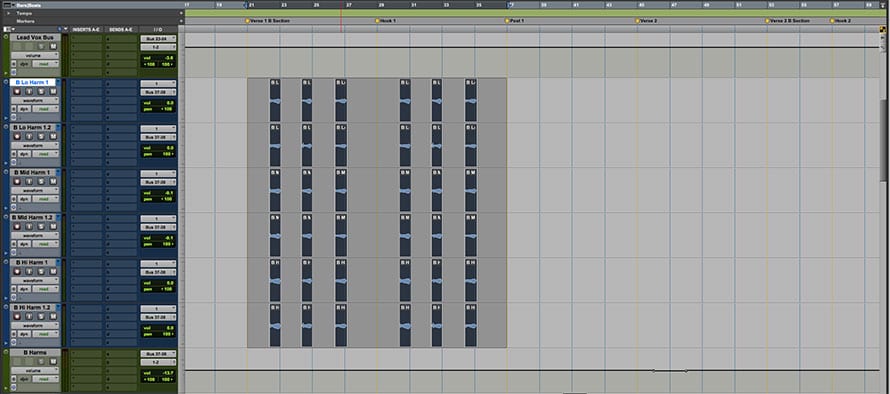
Fades and crossfades could not be easier. In slip mode and with A-Z shortcuts enabled, select the area of the clip or clips to be crossfaded and press the letter F. That’s it. Done.
Pro Tools lags behind Logic Pro with respect to the composition and piano roll facets of recording and production, both from visual and functionality aspects.
At first glance, the visual presentation of the piano roll does not appear as intuitive, inviting or streamlined:
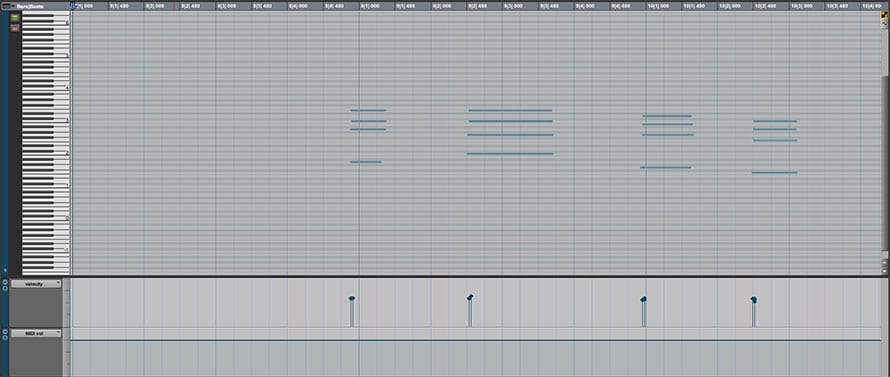
Quantizing MIDI in Pro Tools is not integrated into the piano roll and requires multiple windows to be open. They keystroke Option + 0 must be used, which launches the Event Operations window:

From there, the selected MIDI can be quantized. Even still, the quantize process does not seem to have the same response as Logic Pro, as notes in Pro Tools may end up not fully quantized or not on the grid (like the first chord on the piano track pictured above…that is an actual result).
Pro Tools fits into workflow as the recording DAW and final destination of the creativity. After the editing, comping tuning and rough mixing is complete (all of which are quite cumbersome in Logic Pro), professional mix engineers expect Pro Tools sessions. Working in Pro Tools prior to the mixing process, even if you are not mixing the song, will help streamline workflow as well. If another DAW is used, an export procedure must be performed to consolidate tracks and audio files at specific sample rates and bit depths. Also, all files must begin at the exact same time and have a healthy signal level. A failure in these processes could increase the chance of an error in delivery and may stall the mix engineer’s progress. In other words, keep the audio-related tasks contained to Pro Tools so we can use a screwdriver instead of a hammer.
Activate your musical instincts and learn to use Untagged Loops, Flex Pitch and Tracks Stacks in our ACTIV•8 music production course at Crē•8 Music Academy. Click here or fill out the form below to start a conversation with one of our highly trained admissions representatives and find out how we can help YOU take your music to the next level.
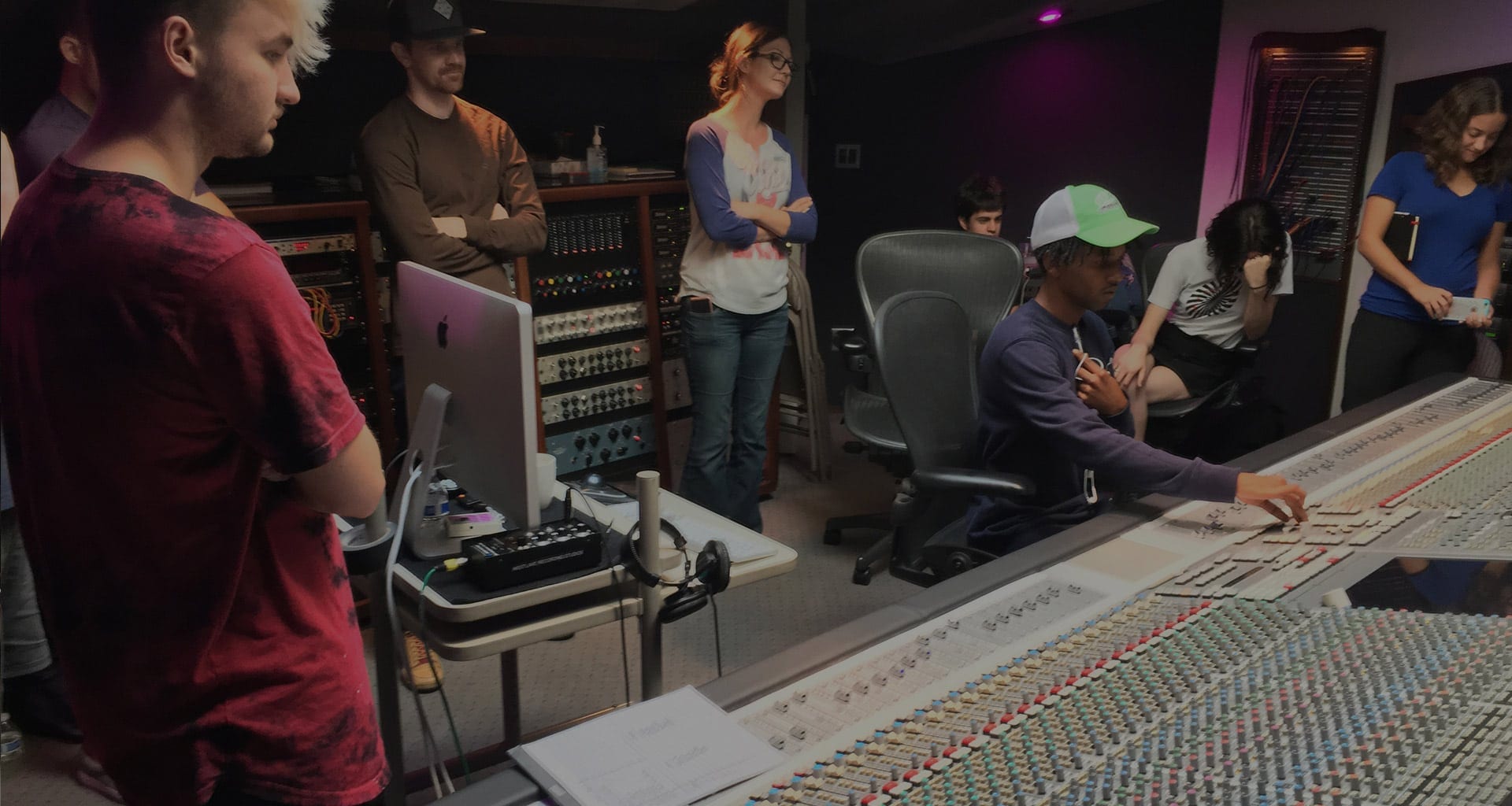


Leave a Reply